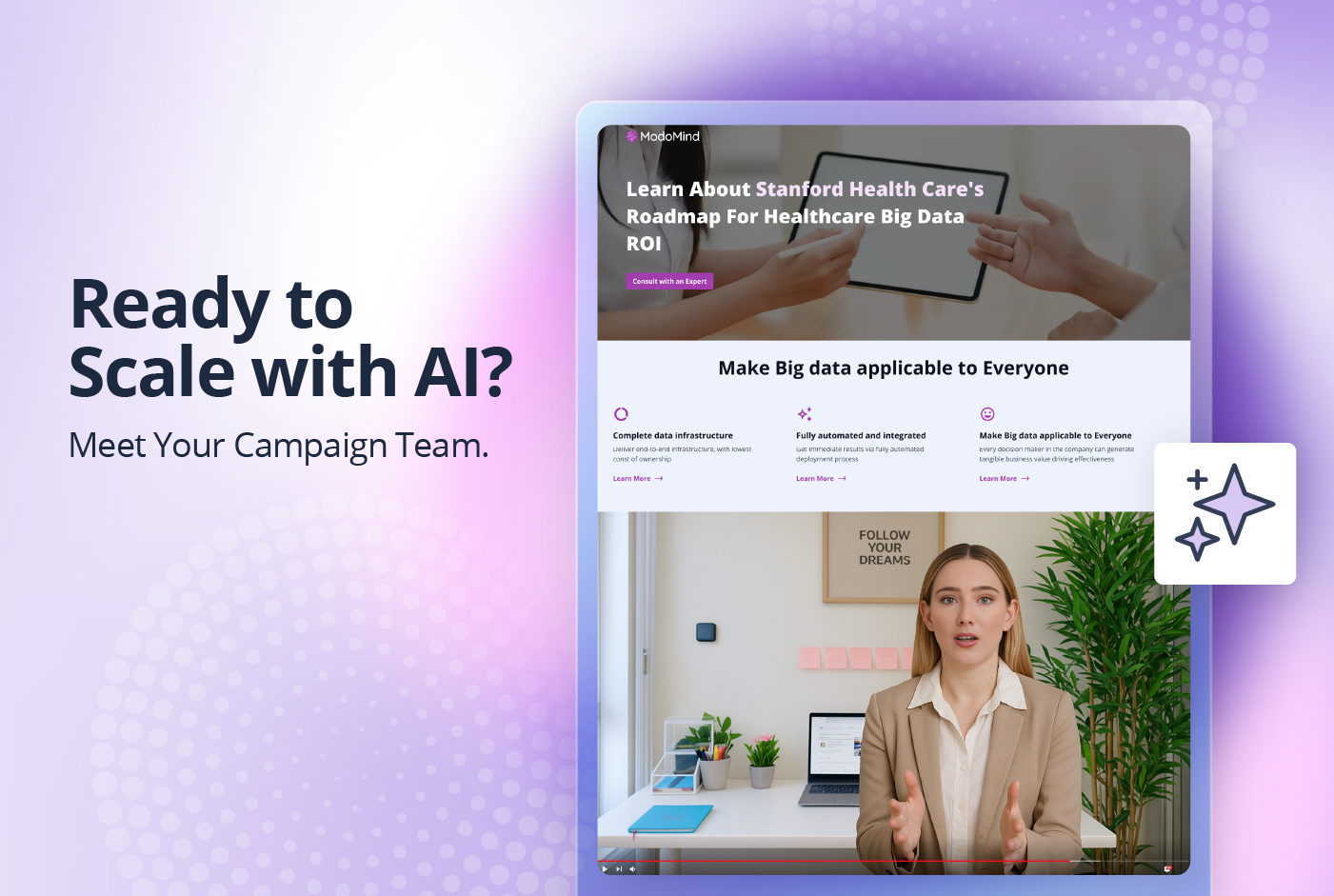As we begin another year, every company always predicts that next year will be “the year of the customer.”
Given the rapid pace of change and the accelerated pace of digital transformation, the face of a typical B2B buyer has always been in a constant state of flux. Looking ahead to 2022, however, it’s clear we’re heading into the “year of the customer” in a very different way.
In the spring of 2021, Folloze conducted its first B2B buyer survey in partnership with the Demand Gen Report. The findings began to reveal the impacts of the COVID-19 pandemic on B2B buying behavior in an unfamiliar digital-first marketplace. At the same time, B2B marketers accepted their new role as architects of digital buyer experiences — and a new partnership with sales.
So how did these trends play out during 2021 and what does that mean for marketers in the year ahead? Here are my top three picks for 2022.
#1: B2B companies face a digital-first buyer like they’ve never seen before
Over the past few years, B2B buyers have asserted control over their own journey of discovery, evaluation and validation. Our job as marketers has suddenly become very focused: make it easy for customers to get the information they need, at their pace, when it will do them the most good. The enterprise companies that make the most significant inroads in 2022 will inevitably take their cues from their customers and transform their marketing approach accordingly, with a heavy emphasis on the right mix of digital and personal.
The rise of millennial B2B buyers is accelerating the changes in buying behavior. According to a recent survey, 74% of millennial B2B buyers have switched vendors because the new company delivered experiences comparable to B2C providers. Among B2B buyers of all ages, 67% have switched to purchasing from vendors that offer a more consumer-like experience.
Finally, B2B marketers also face the sobering reality that thousands of buyers are becoming vanishing sales targets. As of August 2021, 55% of the workforce was looking for another job. As a result, existing sales target data and prospect lists have a very short shelf-life.
#2: The rise of ‘frontline marketers’
As we learned from our B2C counterparts, customers will reward truly valuable interactions — and punish companies that miss the mark. In a B2C world, personalization is commonplace and advanced. B2C companies that excel at personalization can realize revenues and customer retention rates that are five to ten times higher than those that are not leveraging personalization tactics.
Enterprise B2B marketing teams at forward-thinking companies are clearly reading the tea leaves, trying to catch up to their B2C counterparts in terms of their ability to deliver intelligent, effective personalized content to customers.
That starts with a big change at the functional level: specifically, by democratizing the ability to build campaigns that center on highly engaging digital experiences, frontline marketers will get closer to their buyers — and ultimately, to revenue. That said, making this shift requires that marketing and revenue teams reimagine their operating model and tech stack.
This agile operating model uses a hub-and-spoke approach to deliver personalization at scale across every digital touchpoint. Each hub empowers customer-facing frontline marketing teams — spanning the ABM, demand generation, partner, and field and event marketing functions — to own and build specific elements of the personalized digital buyer journey.
In this evolving model, the frontline marketing teams set the pace, the type of deliverable, and the content to reach these prospects effectively, while headquarters provides oversight, brand guidelines, governance, and sign-off. The two groups work harmoniously, each with a clear understanding of their respective roles.
#3: Connections won’t have to be person-to-person to be personal
We’ve been trained to believe the customer journey depends on face-to-face interactions; the box seats at a major league baseball game, drinks after the demo, even Zoom qualifier meetings.
But a digital-first world means there’s an entire strategic toolbox at your disposal that’s much bigger (and better) than anything that existed in previous decades. And it counts just as much — if not more — than those in-person interactions. Because now you have the ability to go granular with customers, trusting your frontline marketers to know their customers so well that they can determine the right time to create a hyper-personalized blog or an infographic, send a highly targeted email, or have that face-to-face dinner. The point is, when information comes to customers at just the right time, it feels super personal.
One wildcard in 2022: B2B buyers are digitally burned out. As a result, every company is fighting for attention in what’s now become an oversaturated digital marketplace. That means you have an even greater opportunity to capitalize on personalizing your message and meeting your customer where they are. This includes capitalizing on the ability to transform virtual events. Rather than long video broadcasts that poorly imitate in-person encounters, we can now develop strategies for small, highly targeted — and highly impactful — virtual events. These are certainly exciting times for marketers.
Next year, watch for more B2B marketing teams to play with this mix to drive greater conversions. What do you see coming down the pike for marketing in 2022?



